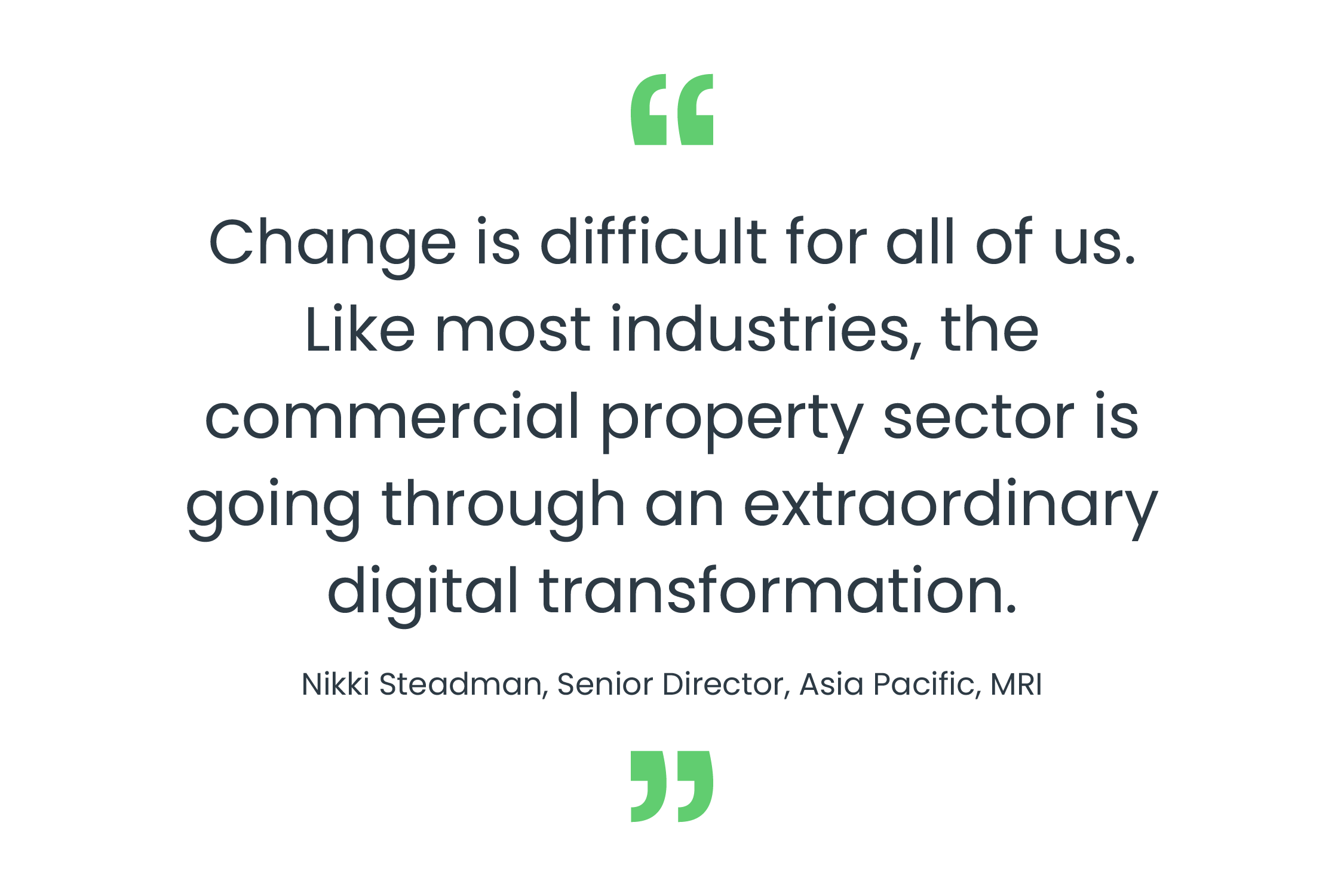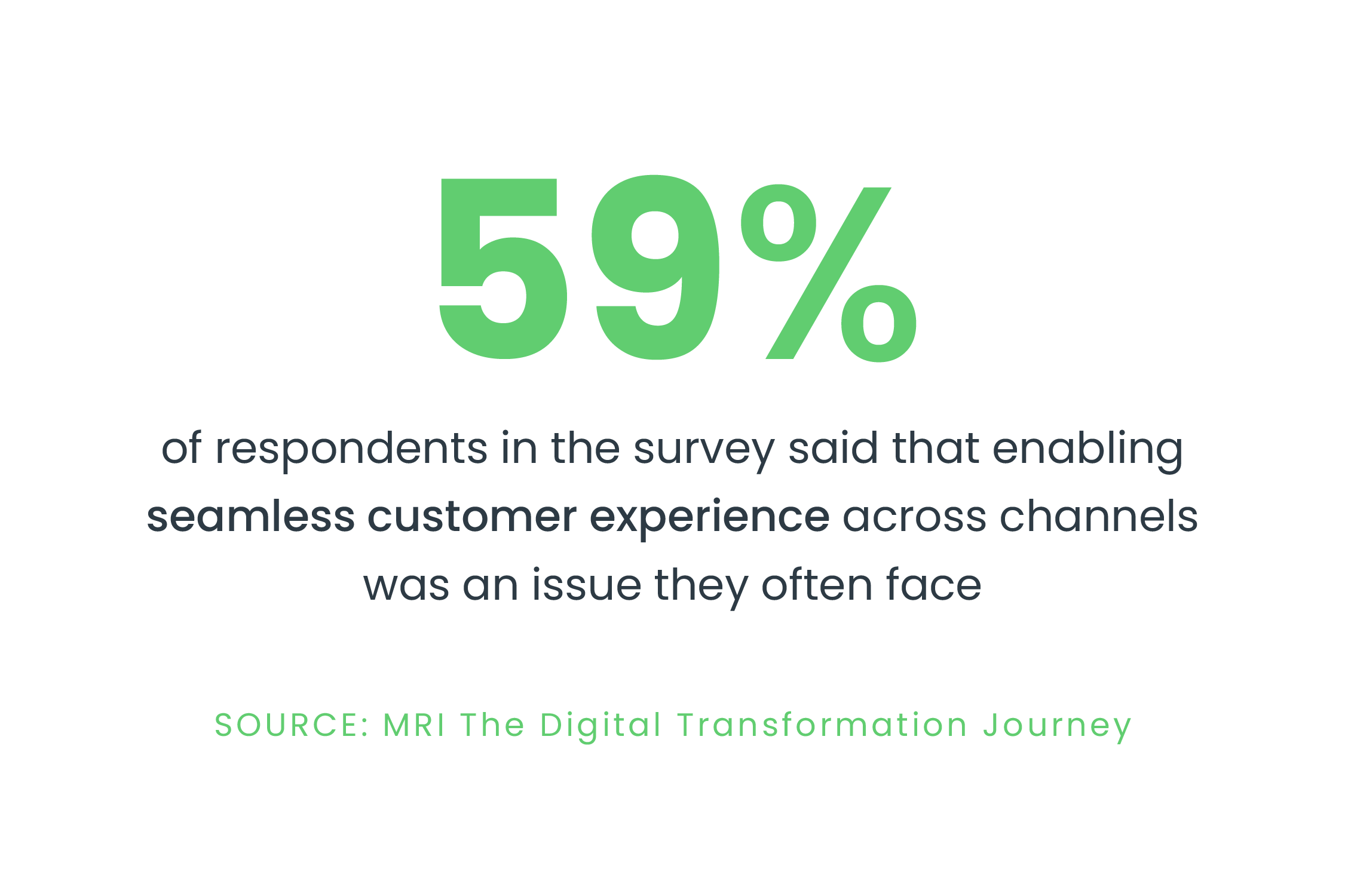In November, Property Inspect’s integration partner MRI Software issued The Digital Transformation Journey, a comprehensive report providing insight and best practices for proptech from now until 2028.
The report surveyed over 100 leading commercial real estate companies, with those findings validated through interviews with JLL, QIC Real Estate, Investa, and more. It covers the biggest business challenges that commercial property industry leaders are grappling with, the digital solutions found to be most useful in tackling those challenges, and the areas of innovation that industry leaders are racing to understand, implement and measure to gain and maintain competitive advantage.
In this blog, we’ll look first at the challenges identified in the report, then delve into the proptech solutions helping leaders navigate these challenges, before finally asking about the current shape of proptech in 2023 and the direction it is heading.

The biggest commercial real estate challenges
According to the report, “complex legacy systems and a persistent reliance on manual processes are major roadblocks to effective business operations.” 46% of the commercial property professionals surveyed by MRI said they find working with outdated systems and manual processes to be challenging.
76% of respondents recognised that automation is a key priority across all aspects of the modern commercial property industry, with a lack of data-driven reporting being one major frustration.
To that end, integrations have emerged as a favourite to overcome these data-driven reporting issues, with integrated systems enabling a single source of truth, which gives rise to seamless reporting for commercial real estate businesses and teams.
Aside from outdated systems and manual processes, the report identified three significant challenges facing commercial property professionals:
- Performance Challenges (44%)
- Process Challenges (29%)
- People Challenges (27%)
Performance Challenges
Within performance challenges, on a more granular level, 59% of respondents in the survey said that enabling seamless customer experience across channels was an issue they often face.
40% said achieving measurable performance improvements and business outcomes posed a significant challenge, while 22% said that driving sustainability initiatives and environmental impact reduction was an uphill battle.
Ramesh Narayanan, Head of Digital at QIC, said: “There is a common tendency to overlook the crucial step of defining clear business requirements before diving head first into technology deployment. Technology’s “shiny object syndrome” tends to take precedence over a thorough understanding of the business’s actual needs and measurable ways of tracking performance.
“If it’s being claimed that operational efficiencies will save us a lot of money, you need to be able to identify which resources will be freed up. Equally important is having the finance systems in place that can track ROI and business benefits effectively.”

Process Challenges
Among the main process challenges faced by CRE leaders were streamlining complex processes and reducing manual workloads (33%), enhancing reporting and analytics capabilities (30%), and optimising resource allocation and cost-efficiency (19%).
In the case of process improvements, one of the first things CRE leaders can tackle is their outdated legacy systems. These typically cause operational friction, replacing it instead with streamlined, simplified, and automated solutions.
Again, integrations and that hallowed single source of truth that feeds into other systems can help report seamlessly, while at the same time automating manual, time-consuming processes so resources can be allocated much more efficiently.
People Challenges
On a deeper level, the democratisation of technology and data appears to be a common issue rife in commercial real estate. This is evident by the challenges highlighted in the report, such as facilitating data-driven decision-making (35%), enabling real-time access to accurate and reliable information (32%) and enhancing collaboration and communication within teams and stakeholders (27%).
Amanda Steele, Group Head of Property at ISPT, said: “We try to incorporate tools that allow everyone to access data and information easily and seamlessly. Data transparency and accessibility from multiple decision and delivery points is key here.”
What are the top 3 technology solutions used in PropTech today?
Most commercial real estate businesses typically use property and facility management software to make their workflows more efficient. In fact, the report revealed that three-quarters of these businesses consider simplifying operations and improving efficiency as a key focus and high priority.
In recent years, we’ve also seen businesses use proptech solutions not just for the routine tasks associated with their roles, but for more sophisticated planning. The widespread adoption of portfolio management tools certainly indicates a move towards a more strategic approach in the industry, and not just process-led digitalisation.
The reasons why property professionals are equipping themselves with proptech are manifold, but one thing that stands out above the rest is analysing data, which gives property professionals a much clearer picture of things like needs, preferences, and behaviours of tenants and building occupants.
These insights enable teams to place a greater emphasis on customised services, which are incredibly important for achieving long-term customer satisfaction and retention.
As identified in the MRI research document, the top three property technology solutions that industry leaders are currently using are as follows:
1. Facilities management solutions
There is an almost universal use of facilities management solutions. While this broad idea takes many forms, it can include high-level facilities management software, energy management systems, smart building management systems, inspection and reporting apps, and Internet of Things (IoT) devices and software for asset monitoring.
2. Property management solutions
Approximately three-quarters of commercial real estate professionals said that they use property management software. Broadly speaking, this type of software can address the three challenges highlighted in the report – people, process, and performance. While it can be considered difficult to implement due to its wide scope, PMS is widely seen as a difference maker, giving those organisations a competitive advantage.
3. Portfolio management solutions
According to the report, two-thirds use either a portfolio management platform or a form of valuation software. Solutions such as these are instrumental in streamlining processes, improving tenant experiences, data-driven decision-making, and advancing cost management and digitisation goals in the commercial property industry.
Three key proptech considerations
Many in the industry ask “Where is proptech now?” While it seems to have been around for a while, there is still difficulty identifying a current solution that fits a given organisation, so the report has drawn on advice from industry leaders who have successfully navigated through a digital transformation project, offering three major success factors which need to be considered:
User Experience (49%)
Nearly half of the participants either considering or already involved in digital transformation initiatives place great importance on having a user-friendly interface. Above all, they value ease of use and the smooth integration of new technologies with their existing systems and procedures.
ROI (35%)
Over a third of the survey respondents emphasised the importance of demonstrable investment returns and tangible cost reductions as crucial factors for the success of technology implementations. Mark Cohen, Vice President of Product at MRI, highlighted that essential metrics for their clients include the growth in the number of managed properties and active user engagement. He noted: “Regardless of the current statistics, the real measure lies in how the numbers evolve over time, indicating overall progress. Assessing efficiency gains and highlighting improved productivity is equally crucial, particularly in terms of managing more properties with the same number of people.”
Time Savings (23%)
Almost a quarter of the respondents acknowledge that the ability to save time and enhance efficiency is significant for the success and best practices in digital transformation projects. Amanda Steele, Group Executive Head of Property at ISPT, believes that the most telling indicators of success are those that have personal significance. She states, “Measures like hours saved per day, week, or month, and the reduction in the number of necessary clicks, are all excellent indicators. These metrics clearly demonstrate the advantages of adopting new technologies.”
Where do we go from here?
The report concludes that as the commercial real estate sector adapts to evolving business requirements, it’s increasingly looking towards digital innovations to tackle various challenges related to people, processes, and performance.
Technologies such as artificial intelligence, predictive analytics, building safety, the Internet of Things, and Environmental, Social, and Governance (ESG) factors are emerging as important elements that many industry leaders plan to adopt in the next five years – if they’re not already doing so.
However far along a commercial real estate business is in its digital transformation journey, here are five recommendations and considerations for navigating and advancing in the modern commercial real estate landscape.
Digitalise manual processes: Transition from outdated systems that hinder operations to more efficient, simplified, and automated digital solutions.
Solve real problems: Concentrate on solutions that align with strategic objectives and business aims, offering true value and a measurable advantage.
Use emerging technologies: Explore the potential of advanced technology in areas like enhanced automation, comprehensive big data analysis, and AI that can be tailored for various tasks in CRE.
Develop robust cybersecurity: Address any gaps or overlooked areas in cybersecurity to ensure robust protection of data and industry-wide security.
Encourage industry collaboration: Foster partnerships to apply best practices and collectively address major industry challenges
For many years, Property Inspect has been helping commercial real estate leaders tackle a range of operational challenges. Whether it’s the digitisation of time-intensive manual processes or entire workflows, or integrating with existing technology solutions to add an extra layer of robustness and agility, we’ve been working closely with the industry to foster safer, more compliant and more transparent buildings.
If you want to learn more about how Property Inspect and MRI are addressing common challenges in commercial real estate, book a demo today.







